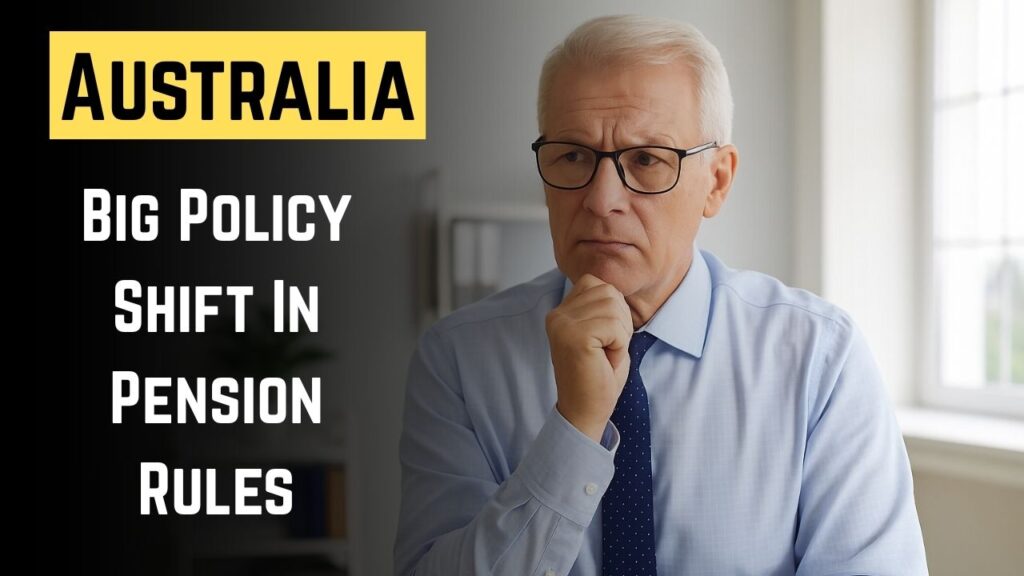The Australian Government has officially revised its retirement policy for employees and staff, introducing new age limits and pension eligibility rules effective from October 2025. The update aims to ensure long-term sustainability of the superannuation system and adapt to Australia’s rising life expectancy. With these new retirement rules, employees across government and private sectors must plan their exit strategies and benefits accordingly. The shift in retirement age, contribution years, and pension calculation methods will have a major impact on financial planning for millions of Australian workers nearing retirement.

New Australian Retirement Age and Policy Updates 2025
Under the revised policy, the standard retirement age in Australia has been increased from 65 to 67 years, aligning with global trends of delayed retirements. This move by the Australian Government is designed to strengthen the pension fund and reduce long-term dependency on state support. Employees who choose to retire early at 62 can still do so, but with reduced pension benefits. Experts believe this will encourage individuals to extend their working years, thereby increasing overall superannuation savings and ensuring better post-retirement stability.
- The new standard retirement age: 67 years
- Early retirement allowed from age 62 with reduced benefits
- Policy applies to all public and private sector employees
Changes in Pension Calculation and Contribution Rules
The Australian Government has also modified the formula for pension calculation. Instead of being based solely on an employee’s final salary, the pension amount will now depend on the average of the last five years of income. This ensures a fairer and more consistent benefit distribution. Additionally, employees will now need at least 15 years of continuous service to qualify for full retirement benefits, compared to the previous 10-year requirement. These changes are meant to promote long-term employment stability and reduce manipulation of last-minute salary hikes before retirement.
- New formula: Average of last 5 years’ salary
- Minimum 15 years of continuous service for full pension
- Short-term contracts no longer eligible for early pension access

Impact on Australian Employees and Superannuation System
This change will directly affect financial planning for millions of Australians. Those approaching retirement in 2025–2030 should reassess their superannuation balance, contribution rates, and voluntary top-ups. The Australian Treasury expects these reforms to save billions in public pension liabilities while helping citizens build stronger personal retirement funds. The government has assured that the transition will be gradual, with support programs and advisory services made available for affected employees. Private employers are also being guided on how to align company policies with these new national retirement standards.
- Gradual implementation till 2030
- Superannuation contribution limits raised
- Government to launch retirement planning helpline
Full Breakdown: New Australian Retirement Rule Comparison 2025
The table below provides a detailed comparison of the old and new retirement rules for Australian employees, helping individuals understand the implications and prepare for the upcoming transition.
| Policy Element | Previous Rule | Updated Rule (2025) |
|---|---|---|
| Standard Retirement Age | 65 years | 67 years |
| Early Retirement Option | From 60 years | From 62 years (Reduced Pension) |
| Years of Service for Full Benefits | 10 years | 15 years |
| Pension Calculation | Final Salary Based | Average of Last 5 Years’ Salary |
| Superannuation Contribution Limit | $27,500 annually | $32,000 annually |
| Retirement Notice Period | 3 months | 6 months |
| Post-Retirement Health Coverage | Partial (50%) | Extended to 75% with 15 years of service |
FAQs – Australian Retirement Age and Policy Changes 2025
Q1: What is the new retirement age in Australia for employees?
A: The new standard retirement age is 67 years effective 2025.
Q2: Can employees still retire early under the new rules?
A: Yes, employees can retire from age 62 but with reduced benefits.
Q3: How will the new pension be calculated?
A: Based on the average of the last five years’ income instead of the final salary.
Q4: When will the new policy be fully implemented?
A: The transition will be completed gradually by 2030.





